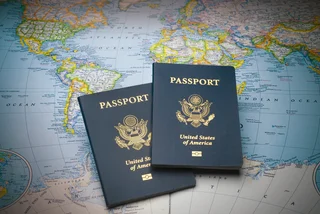The EU has announced a revised timeline for implementing its Entry/Exit System (EES) and the related travel authorization system called ETIAS, with some components of the digital border programs now projected to become operational in the next two years.
The EES will record travelers' entries and exits at EU borders, while the ETIAS will require non-EU nationals who are tourists to obtain online pre-travel authorization. Both systems were initially scheduled to be operational by now, but have faced delays.
Going digital with the EES
On Thursday, EU home affairs ministers approved the new dates for the implementation of the EES. Designed to replace passport stamps, the EES should be launched in the second half of 2024.
The EES will introduce fully electronic records, capturing information such as names, travel document types, fingerprints, facial images, and dates and locations of arrival and departure.
It aims to enhance border security and enforce the rule of maximum 90-day stays within any 180-day period for short-term visitors. The EU has confirmed that third-country nationals with a work or student visa will be unaffected by the changes and will not need to take any further action.
Clearance needed before entering Schengen zone
The ETIAS should now come into force by the end of the first half of 2025. Under the ETIAS, those from visa-exempt countries – but not from the Schengen area – will need to apply for digital authorization on an official EU website before traveling to Czechia or a different state in the Schengen zone. The UK and the U.S. are both examples.
EU nationals will not need the digital certificate.
According to the EU, most applicants for the virtual authorization will receive their certificate “within minutes,” but in some cases the process “may take up to 30 days.” To apply, you will need to pay EUR 7 (CZK 172) and possess a travel document that is recognized by European countries.
Will delays be harmful for travelers?
The European Commission is preparing a worldwide information campaign to inform travelers of these changes. However, the delayed implementation of the EES has raised worries about border wait times once introduced among member states.
An independent report found member states to be concerned about less time to test the digital system due to repeated changes to timelines. Without proper testing, countries fear potential issues could cause lengthy travel delays.
While the European Commission recommends a gradual introduction to address these risks, the full impact on traveler experiences remains uncertain given the protracted rollout of the new biometric entry and exit controls.












 Reading time: 2 minutes
Reading time: 2 minutes 

























